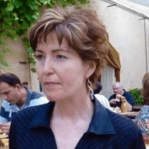
Africa’s iconic baobab tree, sometimes called the “upside-down tree” and popular in myths and local legend, was in trouble earlier this century. Large numbers of this significant tree, with some specimens more than 2,000 years old, were dying due to land-use changes and climate-change impacts, triggering fears it might become endangered.
Reintroduction of such threatened species illustrates the vital importance of gene banks, including the one at Nairobi-based World Agroforestry (ICRAF), which is conserving millions of tiny treasures that lie at the very heart of nature’s food chain.
Repositories of genetic resources, gene banks conserve and distribute seeds to help to revitalize the planet’s threatened biodiversity. That includes the baobab (Adansonia), a priority African species, which some researchers say is threatened by climate-change related drought.
Smallholder farmers in particular rely on the wealth of agroforestry tree species at the ICRAF gene bank. It conserves about 5,800 seed accessions, or unique seed samples, representing 189 tree species. These trees, in turn, support an enormous range of biodiversity functions –buttressing agriculture by improving soil nutrient content, protecting water systems, and directly providing food, fodder and fuel.
And that can be critically important to improving resiliency, food security and livelihoods for farmers, who must often find ways to adapt to land-use changes; particularly, the dramatic alterations such as droughts and floods caused by climate change.
“We always have the direct user, the farmer, firmly in our minds,” says Alice Muchugi, manager of the ICRAF gene bank. Most of its requests for tree seeds and tree information come directly from farmers themselves, she notes.
The ICRAF facility, which hosts the world’s largest holdings of agroforestry tree genetic resources, focuses on species indigenous to the regions where ICRAF works: Africa, Asia and Latin America.
The Nairobi gene bank has a short-term holding site for drying seeds, medium-term seed storage and research facilities to provide information on various agroforestry tree seeds. ICRAF aims to conserve agroforestry tree germplasm and develop a global conservation system for priority agroforestry trees.
A wide diversity of tree species that are used in agroforestry systems is conserved and studied by researchers at ICRAF’s gene bank, which has a mandate to “collect, conserve, document, characterize and distribute” a diverse collection of trees and shrubs that are relevant to agroforestry.
That diversity and even the very existence of many trees is under constant threat from forest and rangelands degradation by human activities as well as from climate-change driven disasters, such as drought, floods, erosion, and even changing temperatures. Farmers, anxious to adapt their landscapes to these new realities, bring such concerns directly to ICRAF researchers.
“Climate change and its impact is always in our minds and our work because most of the queries we get are: ‘what tree is useful for what location?’ and ‘what tree should we plant, and when and where?’,” says Muchugi. “Providing such information is an important part of our work and our databases help tree planters to make the right decisions.”
Storage of seeds and their important genetic material can be challenging since not all seeds can be safely dried and stored at low temperatures, the general process for seed storage. Some seeds, particularly from high-value plants such as coffee, tea, cashews and many fruit trees, must be conserved either cryogenically, or in field gene banks.
For that reason, in addition to its Nairobi facility, ICRAF also holds some 60 genetically diverse fruit, medicinal and multipurpose tree and shrub species in 42 field gene banks in 16 countries in different agro-ecological zones across Africa, Asia, and Latin America. There are over 12,000 accessions of almost 70 species in these gene banks, which are managed in collaboration with local partners.
Another 2,280 accessions of 120 species of seed in storage in Nairobi are held in long-term storage in China at the Kunming Institute of Botany gene bank and at Britain’s Millennium Seed Bank managed by the Royal Botanic Gardens, Kew. Almost 1,100 accessions representing 166 agroforestry tree species have also been deposited at the Svalbard Global Seed Vault in Norway, near the Arctic Circle.
ICRAF researchers, who analyze, evaluate and document tree genetic material, aim to ensure its longevity, so these kernels of new life will be available for future planting, for restoration of forests and ecosystems more widely. That is essential to the mandate of the U.N. Decade on Ecosystem Restoration that begins in 2021.
The critical work of trees and, by extension the ICRAF gene bank is reflected in the Sustainable Development Goals (SDGs), including indicator 2.5.1 of SDG Target 2.5 that urges maintenance of “genetic diversity of seeds, cultivated plants…through soundly managed and diversified seed and plant banks.”
Learn more about gene banks during a GLF Live event on May 13, 2020 at 12 p.m. GMT/2 p.m. CEST /8 a.m. EDT.
Tony Simons, director general of World Agroforestry (ICRAF), will speak with other experts including Charlotte Lusty, head of programs and gene bank platform coordinator at Crop Trust; Lava Kumar, virologist and head of germplasm health at the International Institute of Tropical Agriculture (IITA); and Vania Azevedo, genebank head at the International Crops Research Institute for the Semi-Arid Tropics (ICRISAT). They will discuss the relationship between COVID-19, gene banks and the conservation of seeds.
We want you to share Forests News content, which is licensed under Creative Commons Attribution-NonCommercial-ShareAlike 4.0 International (CC BY-NC-SA 4.0). This means you are free to redistribute our material for non-commercial purposes. All we ask is that you give Forests News appropriate credit and link to the original Forests News content, indicate if changes were made, and distribute your contributions under the same Creative Commons license. You must notify Forests News if you repost, reprint or reuse our materials by contacting forestsnews@cifor-icraf.org.












